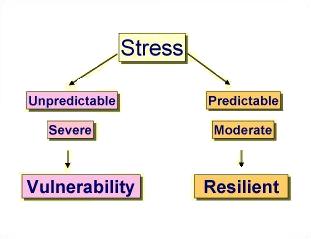Post Traumatic Stress Disorder Information
Click here to scroll to the list of available medications ↓
Post traumatic stress disorder, often referred to as PTSD, is associated closely with anxiety disorders. PTSD, as the name implies, is brought about by a significantly tragic and painful event in the patient’s life. Post traumatic stress disorder affects a patient’s ability to function in nearly every part of their life, with varying degrees. Often patients with PTSD don’t even realize they have the symptoms, as most patients claim they just feel “numb” or “scared” until they finally find themselves at the brink of hurting themselves, or have some other type of breakdown. Post traumatic stress disorder can occur either immediately after a traumatic event, or may fester with increasing symptoms for years, sometimes a lifetime, before the patient receives any help.
Anyone can be affected by PTSD. Children, teenagers, adults, and even people placed in relative hero positions such as search and rescue workers, fire fighters, police officers, and other high stress, high management jobs.
There are a multitude of symptoms that point to post traumatic stress disorder, and a patient may experience all of them, one of them, or some combination of “average” symptoms along with a few of their own. Symptoms may include irritable and angry reactions, a feeling of numbness to those around them, dreams and nightmares especially related to the event, avoidance techniques when it comes to talking about or thinking about events surrounding the event or the event itself, shame, guilt, flashbacks that may last moments or days, self destructive behaviors like experimenting with drugs or having excessive casual sex or drinking, difficulty sleeping, difficulty maintaining personal relationships, a feeling of hopelessness, problems remembering or concentrating, distracted behaviors, a disassociation from events and activities that the patient once enjoyed or people they once loved, becoming frightened or startled easily, and sometimes even hearing and seeing images that are not there.
A patient may not experience PTSD symptoms on a regular basis, especially those who suffer for years. Sometimes a patient can seem perfectly healthy for years at a stretch and then revert into their symptoms without warning, or with the mention of something very small that might remind them of the traumatic event.
It is unclear why some patients develop PTSD while other patients who experience trauma are able to sort out the details and move on without serious interruption to their life. Many researchers believe that a combination of family history, biology, temperament, environment, life experiences, and the chemicals in the brain may affect a person’s susceptibility to post traumatic stress disorder.

There are no specific risk factors for developing post traumatic stress disorder. In fact, nearly 50% of the adult population has or has had PTSD even for a short time during their life. Those who lack strong familial support tend to develop the disorder for longer periods of time than those who have good support systems. Despite the fact that trauma is based on the individual’s perception, those who have witnessed violence tend to suffer the most, along with those who have suffered extreme betrayal by family members, or have been inflicted upon by either someone they love or a stranger, to endure a horrible event.
Diagnosis is based on the response to a standard set of questions. Patients who relive the event, who have interrupted sleep or nightmares, avoid situation dealing with the event, have intense fear or horror, the event itself was considered traumatic, the symptoms last longer than one month, and the symptoms are intense enough to interfere with daily life.
Left untreated, PTSD can lead to behaviors that are likely to end in self destructions including depression related drinking and drug use, eating disorders, and suicidal thoughts or actions. Post traumatic stress disorder can lead to behaviors in teenagers that are life threatening despite their better knowledge. This includes drinking and driving, unprotected promiscuity, and truancy. Adults often find that everything they’ve worked for, including their jobs and careers are suddenly in trouble because they have opted to stay home rather than show up too often, or are unapproachable at work. Society is not geared to distinguish between irresponsible behaviors and PTSD, some of which may appear to be one in the same.
Treatment can vary, depending on the physician involved and the patient’s preferences. Medications to relieve the symptoms are available, but only work well in conjunction with psychotherapy. Some patients choose therapy methods including talking therapy, MDMR, cognitive therapy, and even behavioral therapies. There is a constant effort in the medical community to come up with better and more productive therapies to deal with this type of mental illness. Patients can feel relieved that with a little help, the majority of patients learn to live healthier, happier lives.